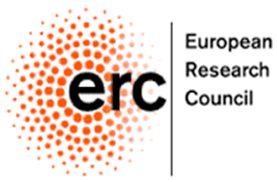VesselNet concept
VesselNet concept is to create in-vitro a functional vascular network (VesselNet), composed of both large and small vessels, within engineered constructs, which will allow for the generation of thick engineered tissues under continuous flow conditions.
3D bio-printing techniques will be applied to create the engineered tissues.
Why VesselNet?
We have demonstrated the role of a functional vascular network in-vitro in enhancing function and integration of implanted engineered tissues (Koffler et. al, PNAS, 2011 , Ben Shaul et al, PNAS, 2019). We showed that engineered vascularized muscle tissue cultured for 3 weeks before implantation, matured and integrated much better than grafts cultured for just 1 week before implantation (A-B).
In vitro culture time and vessel maturity levels positively correlated with integration dynamics of vascularized graft; constructs with more mature vessels integrated faster and the vasculature became more functional, with fewer clotting events in the graft (C-E).
Based on our previous experience in engineering vascularized tissues using flap techniques Shandalov et al, PNAS, 2014 , Freiman et al, J. Tissue Eng.Regen.Med, 2017, Egozi et al, J.Vis.Exp. 2016) we believe that the engineered in-vitro functional network should contain interconnecting large and small vessels.
Significant vascularization of pre-vascularized constructs containing small capillaries occurs when implanted wrapped around large vessels (artery and vein). Sprouts from these large vessels anastomosed with the small capillaries of the construct, resulting in a well vascularized construct (F).

Supporting evidence for creating functional vasculature in-vitro. (A-B) Muscle fiber organization (desmin staining – red) , and integration with host vessels, marked by dextran perfusion (green), of implanted construct cultured for 3 weeks in-vitro before implantation (A) compared to construct cultured for 1 week (B). Constructs cultured for 3 weeks before implantation resemble native muscle organization. (C-D) Maturation and host integration of a 14-day-in-vitro cultured vascularized graft (D) compared to 1-day-cultured graft (C), host vessel – blue, engineered vessel – green, dextran-red.
VesselNet aims
1. Creating in-vitro a functional vascular network
2. Engineering composite tissues
3.Creating thick engineered composite tissues
4. Integrating the thick, composite engineered tissues to reconstruct a large facial defect
In addition, the composite tissues will serve as a model to study mechanisms involved in vessel anastomosis, and tissue organization and stabilization.
VesselNet impact
The VesselNet engineered large –scale composite tissues are expected to have a major impact on reconstructive surgery and will shed light on yet unknown tissue organization mechanisms.


